Americans are very familiar with the Prosciutto di Parma, but there are many other wonderful hams produced across Italy that are virtually unknown to us. Hundreds of years ago, the first settlers to the area known today as Friuli-Venezia Giulia were the Celts and the Carni, both Celtic peoples who settled in the mountains here. They brought with them their methods of preserving hams, and their expertise enabled them to recognize that this area, located between the mountains and the Adriatic sea, provided the perfect climate for air drying of these hams.
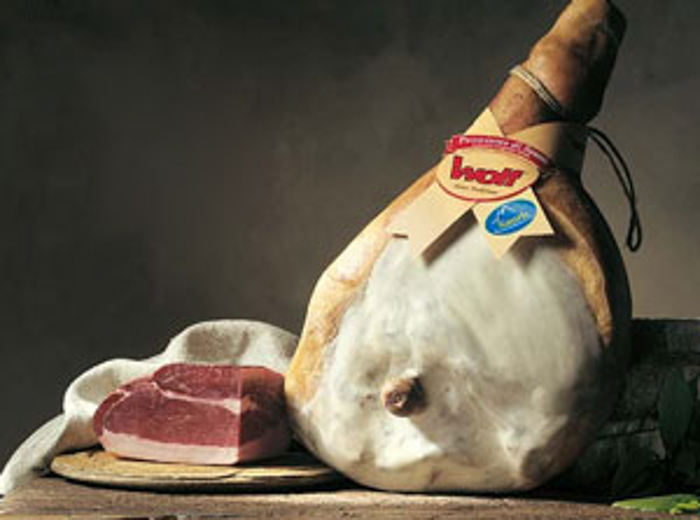
Both salt and smoke curing have been used for centuries to preserve meats. In Friuli-Venezia Giulia, the small village of Sauris di Sotto is home to a well-known producer of prosciutto, owned by the Petris family. Founded in the mid-19th century by Pietro "Wolf" Schneider, a pork butcher who traveled around the town assisting the locals during slaughter season with the production of various types of salumi, Prosciuttificio Wolf Sauris today produces 80,000 legs of prosciutto in the hills above Sauris di Sotto.
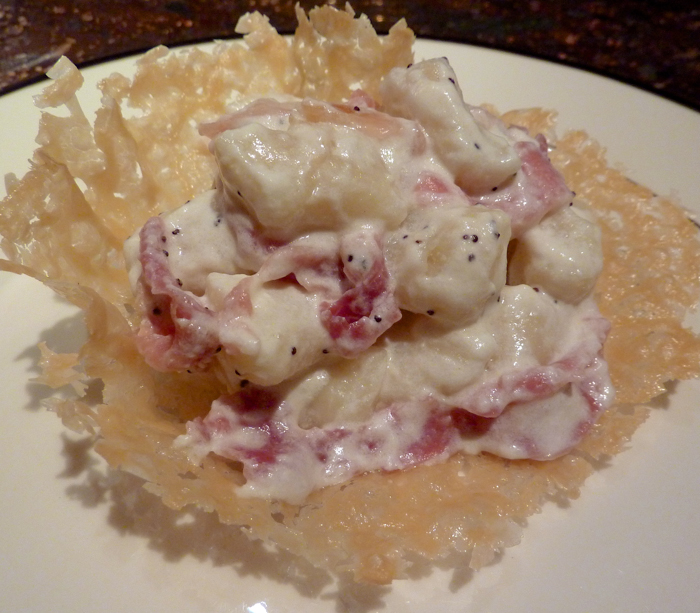
This prosciutto now has an IGP status. These hams must come from particular breeds of locally raised pigs. They are smoked for four to five days over a combination of herbs and woods, including rosemary, sage, thyme, juniper, birch, fir, chestnut, beech, and maple. They are then salted with sea salt, and aged in temperature and humidity controlled chambers.
Every July, the town of Sauris di Sotto celebrates their hometown product during the Festa del Prosciutto. Visitors gather to taste the local hams, salumi, and beers.
I am still struggling to understand the difference between a 'prosciutto' and 'speck'. I have been told, and read, that prosciutto is brined, salted, and air dried, while speck is smoked. In my recent readings on the Prosciutto di Sauris, most recently in Elisabeth Antoine Crawford's book Flavors of Friuli, the difference between the two described there is that a speck is a prosciutto with the bone removed. At this point, I admit to being mystified. But I don't worry too much about the definition, and just enjoy using these wonderful products.
Named after the highest peak in Friuli-Venezia Giulia, Monte Montasio, where the mountain pastures are believed to produce the best milk for this renowned cheese. Mountain milk from the cows in this region is high in butterfat, bestowing the Montasio cheeses with its signature richness. Montasio has been produced in Friuli-Venezia Giulia since the 13th century. Benedictine monks from the Moggio Udinese Abbey perfected the cheese produced by the local shepards and began to export it towards the Adriatic, into the Veneto and over towards Trieste.
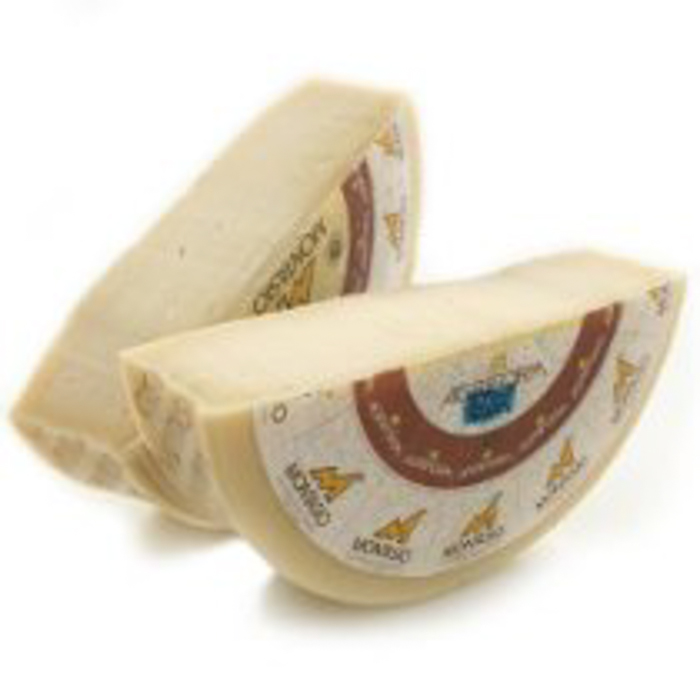
Today, the production of these cheese is regulated by its own DOP, which guarantees the products quality and origin. Montasio can only be produced in Friuli-Venezia Giulia and certain provinces of the Veneto.
The production process today has been modernized, but still basically follows the same steps. The evening milking is partially skimmed, then combined with the milking from the following morning. The milk is pasteurized and then heated to 100°. Rennet is added to cause the milk to coagulate. The large curds are then broken up to smaller grains, and the milk reheated to facilitate the separation of these small curds from the whey. The curds are wrapped in cheesecloth and pressed to remove any excess whey. The cheese is then placed in a wet brine for 48 hours and then covered with dry salt.
After salting, the cheese is aged - from anywhere from 2 months to 2 years. This aging occurs in a temperature controlled room, or cave, and the cheeses are regularly turned and inspected. There are three types of Montasio. A Montasio fresco, or ‘fresh’ cheese is the youngest variety, aged only 2 to 5 months. The fresco is white, with a soft rind, and a mild, delicate flavor. Montasio mezzano has aged 5 to 10 months, is a bit more yellow, with a stronger, tangy flavor. The stagionato variety has aged for a least 10 months, and up to 2 years. It has a dark, hard rind, is golden yellow and quite firm. The stagionato is a great aged cheese for grating, and for making the traditional dish from Friuli-Venezia Giulia, frico.
These cheese, and the traditional dishes prepared with them, are celebrated each year at the Sapore di Montasio festival held each October in Codroipo, Udine.
Friuli-Venezia Giulia is located in the north-eastern corner of Italy, neighbors with Slovinia on the east, and Austria to the north. Part of the Austrian-Hungarian Empire until the end of World War I, it has been ruled by the Romans, Lombards and Byzantines. As a result, the cuisine of this region includes flavors and styles from many cultures, including Hungary, Austria, Croatia and Slovenia.

Friuli-Venezia Giulia is has little arable land, allowing only a limited amount of livestock raising and agriculture. Mountains cover 40 percent of the area, useful only for grazing. Alpine cattle produce the milk for cheeses such as Montasio, and pigs, preserved meat products such as the renowned San Daniele prosciutto.The mountain forests provide wonderful game and a variety of mushrooms, and mountain lakes supply lots of fresh trout.
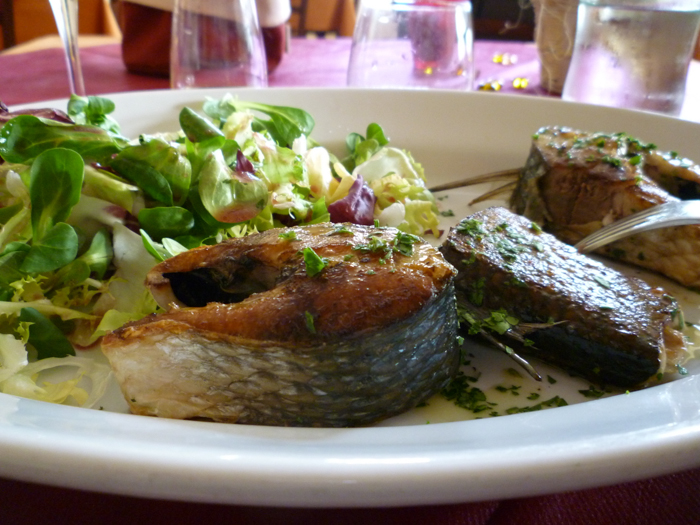
The fertile plain of Friuli is not particularly large, and here is where we find the highest population density. The two banks of the Tagliamento River here are very different in their ability to support food production; the right bank has better drainage, and one finds grain cultivation and forage crops. The western bank alternates between dry during the summer months and soggy from fall and spring rains, and is most of it is usable only for grazing.
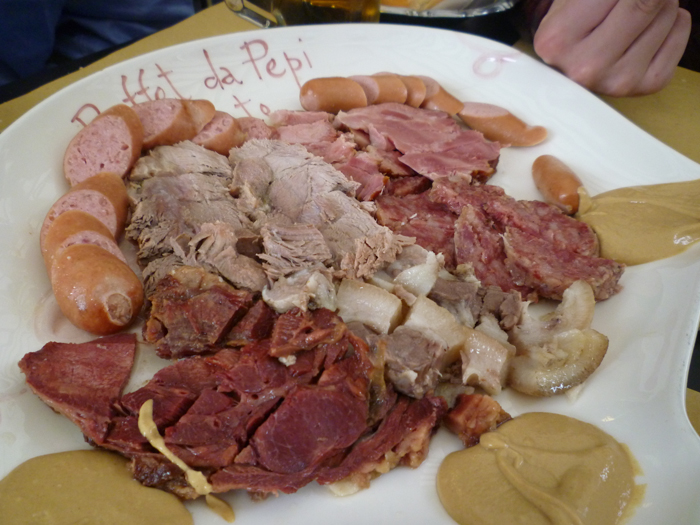
The Carso, bordering on Croatia, is an arid strip of limestone where sheep and goats are raised on small farms. One also finds vineyards, some corn fields, root crops and fruit orchards. Vegetable fields are found around Udine. Along the coastal plain, farmers raise a fine white maize that produces particularly delicate polenta. And finally, seafood is common along the Adriatic coastline on the southern extreme of this region. You will find many different varieties of fish soup, or brodetto.

The Austrian-Hungarian influence appears in many forms: the use of strudel, both savory and sweet, goulash, and sauerkraut. As in most of northern Italy, pasta takes a back seat to other starches, such as polenta and barley. Polenta is slightly wetter here than in Venezia itself. Barley is the most important grain in Friuli Giulia, introduced by the Jews who settled in Trieste, it is used often in soups and orzotto, a 'risotto' made with barley instead of rice.

Sweets are popular in this region, with many type of strudels, or variations thereof, but you will also discover many cakes, tarts and fritters. Most use fruit, such as apples, cherries and raisins and other dried fruit, and are often sweetened with honey.
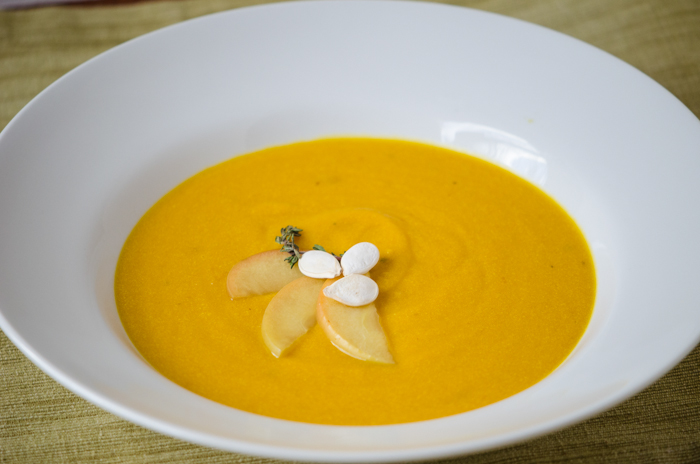
Friuli-Venezia Giulia is 17th among the regions in Italy in size, and 15th in population, but ranks 9th in terms of wine production. It has always been proud of its wines, but only recently have they been exported in quantity, due to the fact that for most of its history there has not been much surplus to export! The first vines appeared in the region around 1000, imported by the Greeks. Today, some of the greatest wines in Italy hail from this region, include Pinot Grigio, Sauvignon, Verduzzo di Rocca Bernarda, Fruliano and Picolit.
Join us in Friuli, as we travel by bike to experience their wonderful wines and unique cuisine. This email address is being protected from spambots. You need JavaScript enabled to view it. to learn more!
In the province of Udine, the hill town of San Daniele is known to rival Parma for its prized and historically famous hams. The unique placement of this town, high in the hills where the salty breezes from the Adriatic to the south mix with the cooler Alpine air from the north, provides the perfect climate for the air drying of hams. The first Celtic settlers to this area immediately recognized this, and, for much of its history, this ham has been central to the flourishing economy of this town. A free town under the rule of the Patriarchs of Aquileia, it paid its taxes with prosciutto. When the Venetians took over in the sixteenth century, and basically exploited this area for its natural resources, San Daniele was left alone as long as it delivered 20 hams a year to the Doge. Hams were supplied to the Hungarian and Viennese royal families. Napoleon, before he left the area to Austria, made off with 2000 hams.
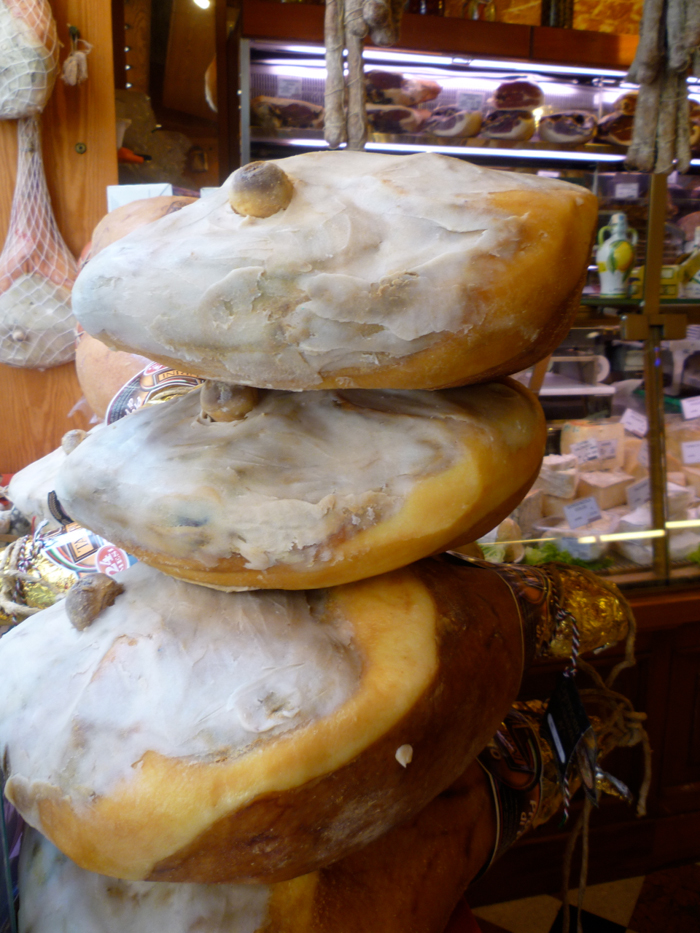
Today, the hams are produced in much the same way as they have been for centuries. Originally, the prosciutto di San Daniele had to be made from black Friulian pigs, but during the 1960’s these pigs became almost extinct. The DOP regulations now strictly control what pigs can be used; they must be from Italy (of course!) of particular breeds, no younger than 9 months and at least 350 pounds. After the pig is butchered, the rear leg is weighed and then salted; the salting time is directly related to the weight. The hams remain salted for 1 to 1 1/2 days per kilogram of meat. This is a shorter time than that used for the Parma prosciutto, which results in a less salty and therefore slightly sweeter meat.
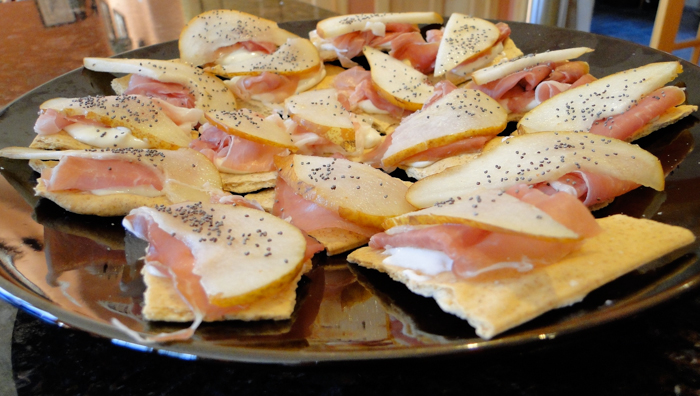
After salting, the legs are washed and then pressed for several days to remove moisture and produce the traditional, mandolin-like shape. During the pressing, the fat merges with the lean meat, more suitable for the aging process. They rest for 3 months, then the legs are washed, dried, and prepared for aging or ‘seasoning’. During seasoning, they are covered with a paste of lard, flour and salt to prevent the exterior from drying out. They are seasoned in large, cross-ventilated rooms that are temperature and humidity controlled by opening or closing vents on either side, maintaining the tradition of using the air to cure the hams.

The San Daniele hams age for a minimum of 12 months, and an average of 14; a bit longer than their cousins in Parma. To determine when the ham is ready, a ‘ham master’ will insert a special needle made of horse bone (thin and porous) into the ham, and sniff. If the ham shows external flaws, or smells suspect, the ham is destroyed. If the ham is flawless on the outside, and smells clean and fresh, it is ready.
For many years in the mid-60s, the importation of Italian hams was prohibited in the US. Today, hams from Parma and San Daniele are allowed. However, the USDA forbids the import of any ham with the trotter, or foot, still intact. In Parma, the foot has always been removed. In San Daniele, the trotters have traditionally been left on, as the producers believe that the cut could allow bacteria to enter the ham, and find that the bone facilitates the drainage of liquids. The producers in San Daniele that import to the United States remove the foot, and specially mark the hams for import to the US. Those to be consumed in Italy still have the foot, which many Italians use to flavor a soup.
When visiting the region, a walk or bike along the Strada dei Castelli e del Prosciutto winds through many hill towns near San Daniele, and provides us with many opportunities to taste these famous hams, with plenty of cheeses and wines to accompany them! A summer visit could include a stop at the Aria di Festa, a annual celebration of the hams.





